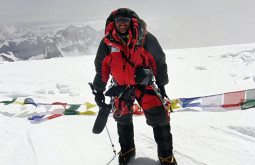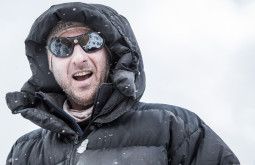Cerro Plata - 11 days
About
Cerro Plata - December until March- 11 Jan 2025 until 21 Jan 2025
Cerro Plata in Argentina is a great option for those who wish to climb a high altitude mountain for the first time or those who would like to acclimatise for something bigger like Aconcagua. Plata is one of the most accessible high altitude centers in the Central Andes.
Our 9-day acclimatisation plan is designed based on our 12-year experience at the Plata range, it will definitely increase your chances of summiting. We use the ‘Carry high and sleep low’ strategy to get all logistics as high as possible and give you a good chance.
The requirements for joining this expedition are:
- International Travel Insurance;
- Multi-day altitude trekking experience;
- Be healthy and fit enough;
- Fill the booking and medical form;
- Read all the information available on this website.
Related News
- Maximo Kausch's guiding career is doing very well: Maximo Kausch’s guiding career is doing very well
- AltaMontanha: An example of how to eliminate a huge problem
- Maximo Kausch likely to have climbed new route at the Plata range: Maximo Kausch likely to have climbed new route at the Plata range
- AltaMontanha.com: 7 expeditions and 7 summits: Maximo’s success as expedition leader
Itinerary
Cerro Plata - 11 daysDay 1 – Arrival to Mendoza – 900m
One member of our staff will welcome you at the airport and bring you to the hotel. In the evening all expedition members will meet for dinner. Depending upon your arrival time, we will assist you to buy or rent all the equipment you need. Included: Transport and hotel.
Day 2 – Drive to Vallecitos – 2900m
In the morning of our second day, we will leave the hotel after lunch and head to Vallecitos, an old ski station used now as a base for expeditions. Will spend the night in mountain hut named Mausy. The food there is very good, the hut is very cozy and the staff very friendly. You will also meet our guardians Mr. Lobo and Miss Brisa, a husky and a Weimaraner who will even come with us to BC! Included: Transportation, night in mountain hut and dinner
Day 3 – Hike to Vega Superior – 3450m
After breakfast, we’ll hike to Vega Superior, a very comfortable camp at 3450m. We’ll carry part of our gear, but not sleep there. After setting up the camp, we’ll return back to the hut and stay another night there. Included: Breakfast, lunch and dinner
Day 6 – Rest – 4300m
Day 8 – Salto – Hoyada – 4700m
We will go to sleep to Hoyada and take the remaining equipment up there. Included: Breakfast and lunch
Day 9 – Hoyada – Summit – Hoyada – 5943m
We will try to summit Plata today. We expect a 8 to 12-hour summit push (up and down).
Day 10 – Hoyada – Mendoza – 900m
We will start early to walk down the mountain passing through Salto, organizing our tents and loading the mules. From there we have a 3-hour walk to Vallecitos. Included: Snack, dinner, and transport.
Day 11 – Flight home – 900m
You will be taken to the airport three hours before your flight. Included: Breakfast and Transport
** The above itinerary is subject to change due to weather conditions, performance of the group, political/administrative problems and any other events not described.
Equipment
Having good mountaineering equipment is one of the key points to have a successful expedition to Cerro Plata. Please note all your personal equipment will be checked by one of our guides in the hotel. You can easily rent or purchase all necessary mountaineering equipment in Mendoza. Find out rental prices in our FAQ.
Head
-

Bandana
Buff or similar
Quantity: 1 or 2 -

Balaclava
To protect your face on summit push
Quantity: 1 -

Hat
Woollen hat or similar for cold days
Quantity: 1 -

Sunglasses (cat 3 or 4)
With side protection to fit your face
Quantity: 1 (rental for U$26) -

Sunscreen and lip balm
30 FPS or more
Quantity: 1 -

Batteries
AA or AAA batteries depending on your headtorch. Can be purchased in local store.
Quantity: 1 set -

Headtorch
Working headtorch and spare batteries
Quantity: 1
Torso
-

Light down jacket
Quantity: OPTIONAL
-

Summit Down Jacket
Heavy hooded down jacket for cold conditions
Quantity: 1 (rental for U$82) -
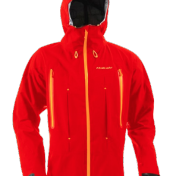
Snowproof jacket
A good snow, rain and windproof jacket
Quantity: 1 (rental for U$57) -

T-shirt
Synthetic fibre long or short sleeve t-shirt
Quantity: 3 or more -

Fleece jacket
Used alone or as part of a layer system for better performance
Quantity: 1 (rental for U$27)
Legs
-
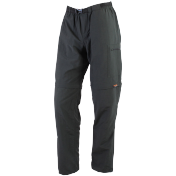
Trekking pants
Light trekking pants
Quantity: 2 or 3 -

Gaiters
For snow, sand or scree terrain
Quantity: 1 pair (U$21 for rental) -
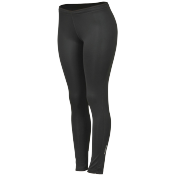
Base layer pants
For very cold days and summit push
Quantity: 1 -

Snowproof pants
Goretex or similar pants will be used for high wind or during snow conditions
Quantity: 1 (rental for U$47) -

Fleece Pants
Fleece, polartec or similar. To be used with other layers for very cold conditions
Quantity: 1 (rental for U$27)
Hands
-

Hand warmers
Chemical hand warmers for the summit push.
Quantity: 1 -

Mittens
Thick down mittens for summit push
Quantity: 1 pair (rental for U$36) -

Gloves
Fleece or polartec gloves for every day use
Quantity: 1 pair (rental for U$12)
Feet
-

Sandals or crocs
Sandals or crocs for river crossing or hanging around camp
Quantity: OPTIONAL -

Trekking boots
Waterproof trekking boots, try wearing them before the expedition
Quantity: 1 pair (rental for U$ 47) -

Trekking socks
Good thick trekking socks
Quantity: 3 or 4 pairs -

Thick expedition socks
For summit day
Quantity: 1 pair -
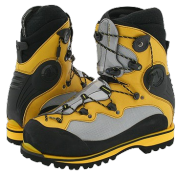
Double boots
A pair of double or double plastic boots such as Koflach Exped, Koflach Vertical, Asolo Ottomilla, Asolo AFS, Trezetta, Scarpa Vega, Scarpa Inferno, La Sportiva Baruntse, Olympus Mons, La Sportiva Spantik, Scarpa Phantom, La Sportiva G2.
Single layer boots such as La Sportiva Nepal XT, EVO, Batura or Boreal Latok, ARE NOT SUITABLE.
Quantity: 1 (rental for U$98)
Technical equipment
-

Crampons
Crampons with antibott system
Quantity: 1 pair (rental for U$41)
Other Equipment
-

Water purifying tables/drops
A reliable way to treat water
Quantity: 1 pack -

Carbo gels
These gels help out on recovery
Quantity: 3 -

Snacks
Salty snacks, sweets, etc. Any sort of tasty ready food as complement. On high altitude mountains we don’t normally worry about vitamins and proteins as these kinds of food are too hard to digest. You can buy all these in a local market.
Quantity: 1kg -

Stuff sacks or bin bags
Helps to keep your stuff dry and organised
Quantity: 2 -

Sleeping Bag
A good down sleeping
Quantity: -15C (Comfort temperature) - rental costs U$69 -

Rucksack
A decent rucksack with hip belt and rain cover
Quantity: 55 litres or more (rental for U$47) -

Altitude medicine
Our guides already have pretty much any drugs you might need during any trip. However, it would be great if you could have a spare tab of the most used drugs:
Ibuprofen (Advil)– This is an anti-inflammatory and works great for high altitude head aches
Quantity: kit
Loperamide (Imodium) – controls diarrea (not to be used in case of digestive infections. Ask our guides) -

Personal Hygiene kit
Soap, tooth brus, come, etc
Quantity: 1 -

Sleeping mattress
We prefer taking 2 foam sleeping mattress because of sharp rocks. If you have an inflatable mattress you should also bring a foam mattress to protect the inflatable one against sharp rocks. Don’t forget bringing a repair kit if you have an inflatable mattress.
Quantity: 2 (rental for U$21) -

1 litre thermos
Metallic good quality 1 litre thermos for the summit push. You must have one. Please do not bring smaller ones.
Quantity: 1 -

Water bottle
Nalgene 1 litre bottles or similar are great for expeditions! We prefer to not use camelbacks as its hose pipe might freeze
Quantity: 2 x 1 litre or 3 x 600ml -

Duffel Bag
Used to transport or store your equipment. In many cases, we transport your personal gear on animals and we don’t want your equipment to get wet or have mule smell…
Quantity: 1 - Rental for U$30 -

Freeze dried food
Freeze dried or dry food for high camp
Quantity: 2 or 3 -
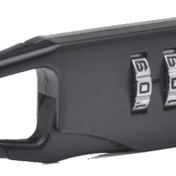
Padlock
To lock your duffel during transportation
Quantity: 1 -

Trekking poles
Gives you more stability during walk and summit push.
Quantity: 1 or pair (U$ 27 for rental)
FAQ
How much equipment will I have to carry? Can I make it?
Your backpack will never weigh more than 12-15 kg. We prepared our itinerary in a way so your equipment is split into 2 loads to be taken up in 2 different days. This way you don’t have to carry so much weight
Do I have to carry tents and stoves?
All group equipment is purchased, carried, cleaned and assembled by our guides, you don’t have to worry about it.
I still think 12kg is too much. Can I hire a porter to carry my equipment?
Unfortunately, Plata is not very developed and we have to take our own porters, therefore, it becomes fairly expensive. We only recommend you to do this if you have a back problem or for some other health reasons, are not able to carry any weight. We need plenty of time to organize this.
Is there communication on the mountain?
Yes! our guides carry sat phones at all times and you can easily make emergencies phone calls for U$3/minute. Our guides carry VHF radios and can communicate between camps at any time. We also have communication with our permanent base at Vallecitos if anything is needed. If we are lucky we might have mobile phone signal just away from BC, but we cannot rely on this.
Would you guys call my family and tell them I’m alright?
Of course! Even better! We have a blog that is updated every day! We normally post messages or photos about the expedition progress. Please visit our Facebook page and check the latest posts.
Do I have to share tents with anyone?
Yes. All tents are shared by every 2 persons and this is previously agreed.
I heard Cerro Plata is an easy trek, is that true?
The Plata is LONG. In fact, you will not use your hands to climb to the summit by the normal route. However, it is almost a 6000 metre mountain cannot be underestimated. The summit day is a long and exhausting push and this is why we focus so much in a good acclimatisation plan.
Can I charge my iPhone battery or my camera?
We will only have electricity on days 1 and 2.
What if I abandon or quit the expedition?
If you quit the expedition 1 week before departure, it is possible to recover part of your investment. Contact us and find out more.
If you quit the expedition in Mendoza, you can continue enjoying the services we provide you such as transportation and hotel. However, we can not pay back the money you invested because logistics will already be hired.
If you quit the expedition after we left Mendoza, you will have to cover individual transportation and accommodation costs. Everyone who leaves the expedition for personal or health reasons, should pay these costs.
If you give up during the summit attempt, you will never have to go down alone. Usually we coordinate your descent with more expedition members or also with guides from other known expeditions. One of the guides will always be with you. This is a common practice in mountains like Cerro Plata or Aconcagua.
For example, if you decide to abandon the expedition at Hoyada at 4700m, you might have a U$150 ~ U$250 expense to get to Mendoza.
What’s your philosophy?
We accept women and men of any age, experience or ambition. We ask our members to be patient, respect the leader’s decisions and never go up or down alone.
Remember that you don’t pay us to take you to the summit, you pay mountaineering professionals with several years experience to help you up and down a steep mountain in the safest possible way.
Our itinerary may seem slower than other companies, this is due to a longer acclimatisation plan based on safety. More days will actually improve the chance of reaching the summit!
How much money should I take?
There is nothing to buy at Plata, but you might want to purchase something on the way to Plata or in Vallecitos. Once we leave Mendoza, all expenses are on us. You need money to rent equipment and pay for food in Mendoza. We recommend you to have about U$600 in US currency. This is a rough estimate:
Dinner and lunch in Mendoza (average of 2 of each): U$80
Equipment rentals (average): U$270
Cost of abandoning trip: U$250
Can I use credit cards in Argentina?
We do not recommend you using credit cards in Argentina. In addition to the up to 25% tax, it is quite possible that your credit card might not work due to the poor communication system. Only major hotels and supermarkets might accept foreign credit cards. The financial situation in Argentina is very unstable so we highly recommend you to bring US dollars.
What sort of training do I need for big mountains like this one?
To 6000m mountains, we recommend you start training at least three months before, depending on your physical condition. Aerobic exercises like running and cycling are very useful. Ideally, ask a professional to recommend you a good aerobic training program. A very effective exercise is to go hiking with a rucksack on lower mountains. BEWARE of injuries! We have had some cases of clients who have trained too much and ended up hurting themselves.
What experience do I need for Plata?
Ideally, anyone attempting Plata should have climbed a mountain with similar altitude in order to become familiarized with acclimatisation and snow walking. We, however, understand how hard it can be to have enough holidays in a year to climb these. So alternatively you can get away with just a multi-day altitude trek such as Everest Basecamp, Annapurna Basecamp or machu picchu. If you don’t have high altitude experience and you do hav to acquire experience before Plata, please let us know and we can organize an expedition for you.
How is the weather in Plata?
It is almost certain that we will take one or two snowstorms at Plata. The local microclimate builds up many cloud systems and accumulates them in the region. Therefore it is cloudy almost every day at around 2 pm. Cold however is not as intense as 6000 metre peaks and usually it isn’t colder than 10 degrees below zero overnight. So basically expect all possible conditions: rain, hail, wind, boiling hot days, freezing cold days, storms…
What if I have a special diet?
Please tell us in advance about any food issues you might have and also please remind our guides about it too. Unless you bring your own food, we cannot help you if you are macrobiotic, vegan or celiac due to extreme logistical difficulties. Contact us and let us know about your food restriction.
Who cooks at altitude camps?
We have very skillful guide/cooks. We guarantee you will e impressed about the meals!
Why do I have to bring freeze dried food?
We recommend our customers to bring 2 or 3 packs of freeze dried meals to Hoyada camp. We have tried to serve a standard menu at high camps for several years but it never worked. One of the symptoms high altitude produces on the human body is the lack of appetite. Therefore people become very ‘picky’ on extreme altitudes so we prefer everyone brings their own meal.
Is there water during the approach?
Yes, there are plenty clean water streams during the approach. The presence of grazing livestock by the trail however, requires you to treat the water with chlorine or similar.
What if I have a health problem?
All our guides have extensive experience in mountain medicine and can solve most of problems you might encounter.
What if I need a rescue?
Helicopter rescues can be made by helicopters at a few specific points in the mountain. They are a VERY complex but can be done by our friends who normally perform helicopter rescues at the neighbour Aconcagua. These, however, are extremely expensive and it is vital that you have a rescue insurance.
Do you recommend the use of Diamox?
NOT for the Central Andes. In extreme altitudes like the Himalayas or Karakorum we do recommend using Acetazolamide or Diamox. This drug seems to actually work during the acclimatisation period by increasing the breathing rate at night (reduces CO2 levels), and also is a diuretic which eliminates sodium out of your system. In the Andes mountains, however, mountains are too dry and taking diuretics such as Diamox actually decrease your acclimatisation capacity.
I was climbing in Peru before and I had a hard time communicating to my guide. Do your guides speak any English?
Yes, our leader Maximo Kausch has lived in the UK for 10 years and speaks fluent English. Please check our team information and find out about our guides’ communication skills.
What percentage of your clients actually make it to the summit?
It depends upon weather, experiences, fitness and their nationality. But usually, about 90% of our clients get to the top.
Where do we go to the toilet on the mountain?
There are no toilets at Plata. In each camp we set a toilet tent and do our ‘business’ in bin bags. All these bags are later brought down. Everything will be transported to Mendoza on the way down.
What if I want to rent equipment?
It is very easy to rent equipment in Mendoza. Check out the list of equipment needed before buying anything. Rentals can be paid in dollars or pesos. These are the costs for the 2017 season. Prices are for the whole expedition:
- Windproof Jacket USD 23
- Trekking pole USD 11
- Plastic boots USD 40
- Trekking boots USD 20
- Duffel USD 13
- Fleece jacket USD 11
- Summit Down Jacket USD 34
- Sleeping mattress USD 9
- Fleece gloves USD 5
- Sunglasses or Goggles USD 11
- Down Mittens USD 15
- Rucksack USD 20
- Fleece pants USD 11
- Windproof pants USD 20
- Gaiters USD 9
- Sleeping bag -20ºC USD 45
Do I need an entry visa to go to Argentina?
Depending on which country you come from. Canadian and Australian citizens, for example, have to pay a U$160 visa to enter Argentina as per reciprocity fee. This should be paid at the airport in cash.
What’s the temperature my sleeping bag should stand?
We recommend you to bring good down sleeping bags with comfort temperature of -10 up to -15. Please note there are 2 types of temperatures shown in most of the sleeping bags. We’re focusing on the “comfort temperature”.

View our photos of Angel Armesto:
Angel Armesto
High altitude mountain guideAngel Armesto is sponsored by:
Language skills:
| English - near native speaker |
| Spanish - native speaker |
| Portuguese - excellent command |
Angel Ezequiel Armesto is a professional high mountaineering guide, graduated in 2001 at EPGAMT Mendoza. Angel was actually one the first high mountaineering guides graduated at EPGAMT Mendoza. Since then he has successfully guided 72 expeditions to Aconcagua and several at the Himalayan Range, including 2 x Everest expeditions, Cho Oyu, Ama Dablam, among others. He has also led expeditions with very complex logistics to very remote peaks including Vinson in Antarctica. In the Andean range alone, Angel has climbed over 75 different extreme altitude peaks.
Angel is an extremely relaxed and easy going person. He’s the kind of guy who can have a solid conversation on subjects ranging from quantum physics to politics or from world macroeconomy to gut microbiology.
More about Angel Armesto

View our photos of Eduardo Tonetti:
Related links about Eduardo Tonetti:
- From the office to the Andes: The story of the mountain guide Edu Tonetti: From the office to the Andes: The story of the mountain guide Edu Tonetti
Eduardo Tonetti
Mountain Guide and Trekking GuideLanguage skills:
| Portuguese - native speaker |
| Spanish - near native speaker |
| English - good command |
Eduardo Tonetti was born in São Paulo - Brazil and was in the advertising business for 15 years. In 2010 he decided to quit his career and guide for living. After 4 years of studies, Edu has graduated at EPGAMT Guiding School in Mendoza. He is now a professional mountain guide and a WFR trained rescuer, licensed to guide in Aconcagua among many other Andean peaks.
Edu has been a rock climber for 13 years and has extensive experience in several rock climbing areas. He specialized in high altitude mountaineering and climbed dozens of mountains in the region. Edu has climbed big mountains like Aconcagua (6962m, 11 times), Ojos del Salado (6898m), Tres Cruces Sur (6738m), Tres Cruces Central (6640m), Mercedario (6770M), Tupungato (6556m), Cerro Plata (5943m), Vicuñas (6087m), among others.
Eduardo has worked with human development and coaching in São Paulo, Brazil and he is now using mountaineering as coaching activities having amazing results!
He has been working in Aconcagua for the last 4 years in a row and started as a porter in 2012. He worked his way up and has now led several expeditions at Central and dry Andes.
Map
Cost
USD 1900, contact us to know the accepted payment methods
What’s included:
- English speaking guide with at least 5 years experience guiding Plata;
- 1 or 2 assistant mountain guides (EPGAMT/AAGM certification) depending upon number or clients (client per guide ratio = 2/3);
- Support on purchase and equipment rental in Mendoza;
- Transport from/to airport;
- 2 nights in a 4 star hotel with breakfast included in Mendoza – rooms are shared by every 2 clients;
- Night at mountain hut in Vallecitos;
- Transport from/to Vallecitos;
- Mule transport of a 20kg load to/from basecamp;
- Transport/assembly of tents, pots, gas, food, water in all camps in Plata;
- Use of toilets tents, mountain tents, medical oxygen, gamow bag and medical kit in all camps;
- Breakfast, lunch, dinner, packed lunch, treated water in the whole mountain;
- Gas stoves and pots and cups in all camps;
What is NOT included:
- Flights from/to Mendoza;
- Personal climbing equipment (check equipment tab);
- Money return in case you abandon the expedition;
- International travel insurance;
- Any costs caused by excess luggage (over 20kg);
- Lunch and dinner in Mendoza;
- Reimbursement for loss or damage of your personal equipment.




